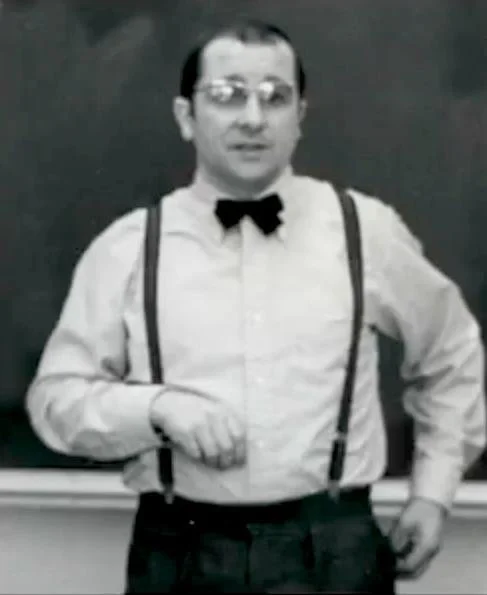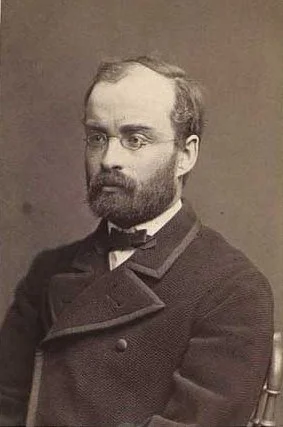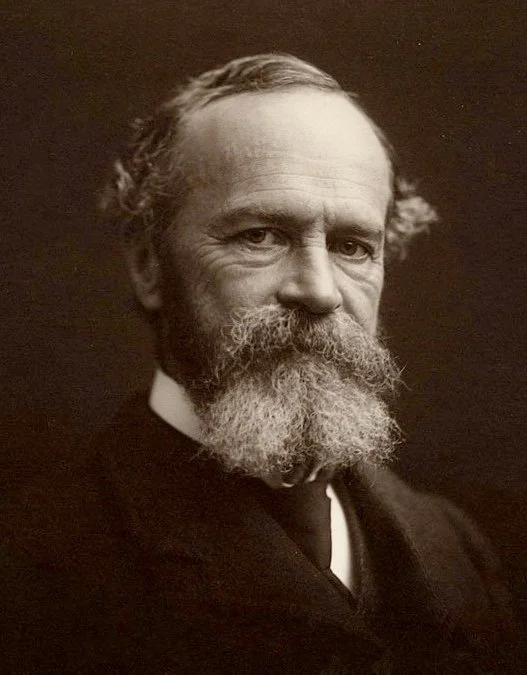Who are the major researchers and scientists behind the development of emotional arousal theory?
William James & Carl Lange
The first researchers to fully explore the connections between emotions and physical arousals were American psychologist William James (1842-1910) and Danish physician Carl Lange. (1834-1900) In the late 1880s, James proposed physiological changes (arousals, in our case) precede emotions- that emotions are informed by arousals instead of the other way around. Contemporarily, Lange proposed that emotions were entirely predicated on cardiovascular events (literally matters of the heart); he might not have been entirely correct, but the movements and changes found in one’s heart muscle are certainly examples of arousal. (Nickerson) These two theories were later synthesized into what we know as James-Lange theory by American psychologist John Dewey in 1894; this more streamlined version of James & Lange’s collective work states in no uncertain terms that “all so-called expressions of emotions are, in reality, the reduction of movements and stimulations originally useful into attitudes.” (Dewey) While this theory is undeniably imperfect, these foundational concepts and ideas paved the way for establishing the more sophisticated version of emotional arousal theory we know today.
Photo: Wikimedia Commons
Stanley Schacter & Jerome Singer
American psychologists Stanley Schacter (1922-1997) and Jerome Singer (1934-2010) are probably the most prominent and important figures in the study of emotional arousal theory; their work in the early 1960s completely redefined what psychologists and scientists knew about emotions. During this time, Schacter and Singer developed what they called the two-factor theory of emotion, which states that 1.) a stimulus will initially cause physical arousal and 2.) people define what emotions they feel based on what arousals they notice. (Schacter 21) In essence Schacter and singer proposed that we feel emotions twice: once subconsciously, which informs the ensuing physical arousals, and again when we make a conscious effort to process and identify what emotion we are feeling based on said arousals, and thus begin to act more rationally. They accomplished this by performing an experiment in which participants were injected with either epinephrine (which causes increased blood pressure and heart rate) or a placebo, and then either informed or misinformed about what the effects the epinephrine would have (or in the placebo’s case, not have) on them. Schacter and Singer found that when the participants knew why they were feeling the way they were- after having the side effects of the epinephrine explained to them- they were far more calm and understanding of their emotions when exposed to anxiety-producing stimuli than those who were misinformed or uninformed. (McLeod) While there have certainly been some criticisms of Schacter and Singer’s work in the years following its publication, their studies on the topic of emotional arousal are by far the most enduring in this field, likely due to the use of a concrete physical experiment to prove their hypotheses.
Photo: IMDB (unknown photographer)
Walter Cannon & Philip Bard
Expanding on Lange’s exploration of the medical and chemical origins of emotion and arousal, American physiologist Walter Cannon (1871-1945) and his student Philip Bard (1898-1977) delved further into the brain’s connection to emotions and if the emotion or arousal comes first in the body’s “order of operations.” In a 1927 journal article for The American Journal Of Psychology, Cannon explained that his research found that emotional and physical responses to stimuli occur separately from one another and simultaneously, as opposed to James and Lange’s suggestion that emotions follow physical responses. Cannon also proposed that the thalamus, or the center of the brain, was the area most responsible for regulating emotions. Combined, these would come to be recognized under the name Cannon-Bard theory. Though Cannon and Bard’s work was important in advancing research on emotional arousal, it has been widely refuted in more recent times. Neuroscientists have found that the thalamus is far from the only only part of the brain that regulates emotions, while psychologists have suggested that the idea that emotion and physical arousal happen simultaneously yet disconnected from each other is inaccurate as well; sometimes, these events do indeed happen at different times, as James and Lange had postulated. (Fletcher)
Dolf Zillmann
While Polish-American information science and psychology professor Dolf Zillmann (1935-) has not done a great deal of work in defining the actual medical science of emotional arousal, his work in relating the theory to mass media and communications is extremely important to our understanding of how the theory can be applied in the modern age. Zillmann suggests that “intense excitement is sought via exposure to the communication media as much as through overt individual or social actions;” (3) in other words, a person can get their arousal kicks just as reliably through experiencing media- watching an exciting movie or TV show, listening to intense music- as they would from, say, offroading a dirt bike through the desert. This ties in with concepts of catharsis theory (in which individuals seek out intense media to relieve themselves of their own intense emotions) and excitation transfer theory (in which a stimulus can be influenced by previous, remaining arousal and excitement from an older event), both of which Zillmann has also done research on.
Citations
Cannon, W. B. (1927). The James-Lange Theory of Emotions: A Critical Examination and an Alternative Theory. The American Journal of Psychology, 39(1/4), 106–124. https://doi.org/10.2307/1415404
Dewey, J. (1894). The theory of emotion: I: Emotional attitudes. Psychological Review, 1(6), 553–569. Brock University - The Mead Project. https://doi.org/10.1037/h0069054
McLeod, S. (2023, October 29). Schachter-Singer Two-Factor Theory of Emotion. Simply Psychology. https://www.simplypsychology.org/schachter-singer-theory.html
Nickerson, C. (2023, November 9). James-Lange theory of emotion. Simply Psychology. https://www.simplypsychology.org/what-is-the-james-lange-theory-of- emotion.html
Schachter, S., & Singer, J. (1962). Cognitive, social, and physiological determinants of emotional state. Psychological Review, 69(5). https://doi.org/10.1037/h0046234
Zillmann, D. (2008). Emotional arousal theory. The International Encyclopedia of Communication. https://doi.org/10.1002/9781405186407.wbiece022
Photo: Wikimedia Commons
Photos: Wikimedia Commons




